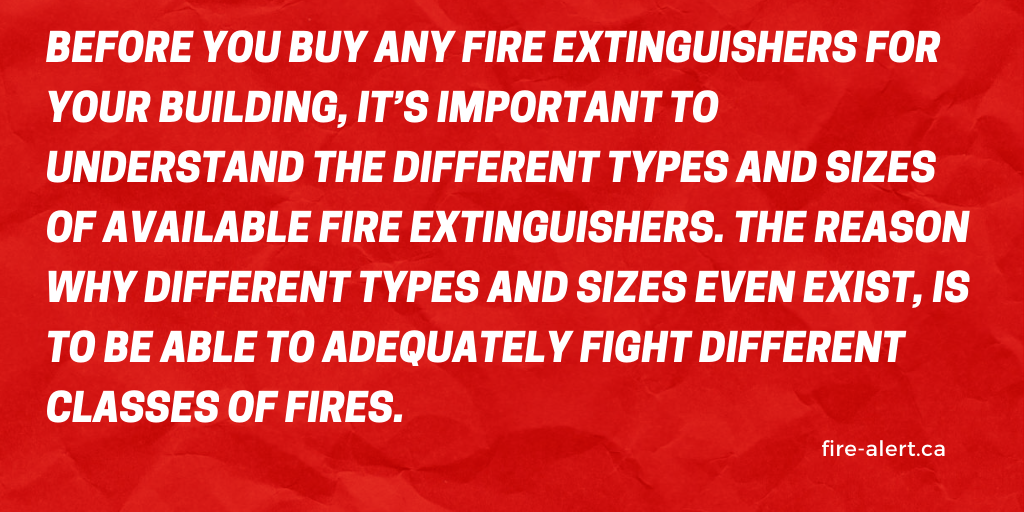How Many Fire Extinguishers Do I Need?
The portable fire extinguishers you see in those glass cases on the wall in commercial buildings have proven to be extremely effective against small fires, with a 95% success rate. But due to the rate in which fires spread and the fact that these portable extinguishers are only designed to control fires in their earliest stages, it’s especially important to ensure that a fire extinguisher is ready and available in multiple locations in your commercial building. While Chapter 6.2 of the NFPA (National Fire Protection Association) 10 covers the specific nitty-gritty details about how many fire extinguishers your building needs, we’re happy to offer this guide to give you an idea of how many fire extinguishers you need based on your building’s size and fire hazard level.
Is My Building Required To Have a Fire Extinguisher?
It’s important to note that buildings of all kinds are required to contain fire extinguishers – excluding family homes. This includes apartment occupancies, business occupancies, educational occupancies, mercantile occupancies and more.
Qrfs.com gives us more information as to where this requirement is located in the NFPA:
“Fire extinguishers are required in industrial, commercial, and residential buildings listed in NFPA 1: Fire Code. NFPA 1 mandates fire extinguishers in nearly every kind of building except family homes, duplexes, and manufactured homes.”
Fire Extinguisher Types & Sizes

Before you buy any fire extinguishers for your building, it’s important to understand the different types and sizes of available fire extinguishers. The reason why different types and sizes even exist, is to be able to adequately fight different classes of fires.
Unifourfire.com breaks down the different fire classes to know when shopping for fire extinguishers:
-
“Class A fires, which are the most common. They are comprised of ordinary combustible products, including wood, paper, plastic, and fabric. Just about every commercial building is at risk for a Class A fire.
-
Class B fires, involving flammable liquids or gases, such as gasoline, oil, propane, and kerosene.
-
Class C fires, which describes fires that involve electrical wiring and thus pose the threat of electrocution.”
It’s important to note that the best way of being prepared to combat all three of these most common classes of fire, is to buy multi-purpose ABC fire extinguishers. These types of fire extinguisher will have size ratings attached to them, which indicate greater fire extinguishing capacity depending on how high the number is.
Location & Placement
Last but certainly not least, the location and placement of each fire extinguisher is crucial to preventing the spread of common types of fires in the early stages. It’s important to be mindful of the location and placement requirements by different class fire hazards, which is outlined in the NFPA.
Firesystems.net explains why location is important when it comes to the prevention of the spread of fires:
“Having the correct type of fire extinguisher for the correct hazard is essential, but so is location. NFPA 10, the standard for portable fire extinguishers, says that fire extinguishers should be located where they are readily accessible and available in the event of a fire. That means extinguishers should be located along paths of travel for ease of access in the event of a fire. Another requirement is visibility. Fire extinguishers need to be visible. If that’s not possible, signage should be installed to indicate the location of the fire extinguisher(s).”
While having a fire detector in your home is not mandatory by law, it is strongly recommended. Fire-Alert takes pride in equipping homeowners with all necessary fire safety devices to ensure the well-being of families across the nation. Reach out to us using our contact form to find out more.